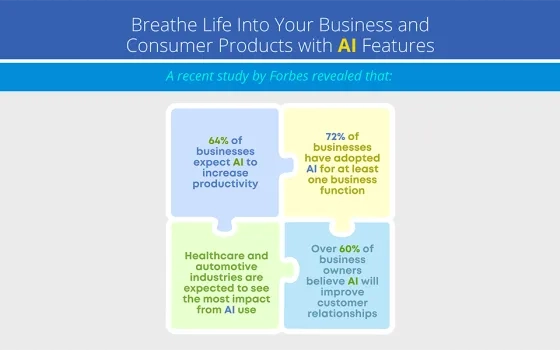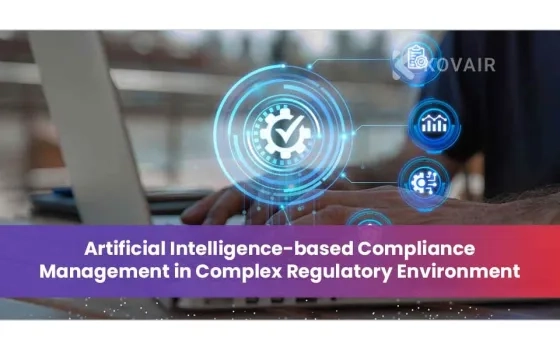Since ChatGPT 3.5 came out almost a year and a half ago, both companies and individuals have rushed to learn more about generative AI (GenAI) technologies. There was a real fear among many that they would miss the next big thing, be passed by rivals who knew how to use it to transform their businesses, or be caught off guard by a change that affected the whole industry. Report after report has talked about how GenAI can change many businesses and how it will affect the future of work. Adding more heat to the fire,
The media kept telling us that a lot of jobs would likely be lost quickly and in large numbers.
Today, there doesn't seem to be as much excitement about GenAI. It's still the same question that many businesses have from a year ago: how can they take advantage of GenAI's claimed cost savings and big improvements in efficiency? What do they do to make it work for their business?
As people who help businesses accept and use AI, we see that many of them are having a hard time. This is because of a few things.
First, a lot of companies, big and small, are still trying to figure out how to use standard AI in their daily work. Examples of this include rule-based algorithms and machine learning. In the best case, they are just starting to learn about standard AL. In the worst case, they are just feeling lost. A recent study found that more than 70% of the big companies that were asked about AI were still not sure how to use it to its full potential.
Second, GenAI is a lot more complicated and is designed to do certain things. It can quickly write a 5,000-word report, but it can't do simple data entry tasks like pulling and sorting driver's license data that normal AI can do without much trouble. In order to get the most out of GenAI, businesses need to really think about which business cases might work. When you use standard AI to navigate, it's like taking a modern but heavy ship through rough water. GenAI adds more weight, power, and an even rougher sea. If a company is still having trouble with the first, it will have a hard time with the second.
Third, it's still not clear what the long-term effects of using GenAI will be, like the long-term prices and the effects of current and future regulations. The way things are now makes us think of just before the year 2000. In those days, businesses may have known they needed websites, but not many of them were sure what role the internet would play as an important part of omnichannel plans, let alone across devices and as phone apps.
Given all this, it makes sense that most businesses are still looking for a way to move forward, even though it may seem like everyone else already knows what to do. That doesn't mean the search is pointless, though. This is how businesses can find their way and decide what to do next.
The Market for GenAI
Which GenAI tool a company wants to use is usually the first choice it has to make. There are now a lot of GenAI suppliers, including big names in the field like Alphabet and Meta as well as newbies like Stability.ai, Hugging Face, and Anthropic. This market is going to get even more crowded because companies with a lot of data, like Bloomberg and JPMorgan Chase, have said they want to join. Apple is also working on its own product, called Ajax. Businesses should think about a few things.
One reason is that Open AI and its current competitors are now competing to be the first choice of GenAI solution makers. Those who are joining the race later may have already missed the boat. OpenAI just released a simple tool for making ChatGPT-powered apps. This is probably an attempt to strengthen its position, since people who are used to one system will probably use it again in the future. OpenAI has the biggest and, some might say, best GenAI on the market, which makes it the best choice to build a community.
However, solution writers probably won't want to pledge allegiance to any of the GenAI makers so that they can use GenAI for different projects.
GenAI companies are competing with each other in a way that reminds me of the early days of the battle between iOS and Android. With a big community, OpenAI could stay on top of the market and make money for a few years, until its competitors can join forces. This doesn't always mean that Apple and Google will work together to take on Microsoft. Instead, competitors would likely agree on the same standard to work together on in order to compete with OpenAI. Our view is that this is similar to what happened in 2015, when Android fans finally built a real ecosystem to compete with iOS. We can expect two or three big groups to compete with each other as the GenAI business gets bigger. You can expect more companies, both big tech ones and small startups, to work even harder to be at the center of these processes.
Key Considerations to Get the Most Out of GenAI
With things the way they are now, how could companies use GenAI? These are some ideas :
Opt for performance over novelty.
GenAI's success doesn't come from text responses that sound like they were written by a person or from a model that was trained on a huge amount of data. To get the most out of GenAI, you need to think about whether it fits a certain goal or job.
For example, ChatGPT is better at handling words and languages right now, but we've found that standard deep-learning is better overall.
When processing pictures, models give much better results. In a different finding, we learned that ChatGPT-4 is better at "understanding" what users are asking, while version 3.5 is faster and better at sending responses to users based on what it process.
In other words, companies shouldn't just jump on the newest AI technology. Instead, they should think about the business problems they want to solve and find the best AI tool for those problems by looking at the pros and cons of each one.
GenAI and vector databases work well together.
This is a new kind of database that finds the records that are most closely related to specific searches. This is different from traditional databases, which just store records. A GenAI like ChatGPT can help businesses break down what users are asking, and then they can use a vector database to find the best answers that fit those guidelines.
As an example, if you were job hunting, ChatGPT and its rivals would let you "read the room" by looking at the interviewers' body language, facial expressions, word choice, and tone of voice. What about vector databases? They would be like your memory and knowledge banks, giving you the power to think of the best things to say.
To put it another way, GenAI might not be enough on its own. If there are problems to be solved, this technology may only be half of the answer. For GenAI to really be useful, companies should expect to have to deal with even more complexity and long lead times when putting the answer together.
Don't forget about human-in-the-loop.
Again, AI tools are only as good as the people who work with them, no matter how powerful they seem. GenAI is the same in this way. People are very important for getting GenAI to work toward business goals, managing interactions within IT systems, planning the actions needed for data to go into and come out of AI models, and reducing hallucinations, which are the made-up or completely false information that GenAI gives off. Hallucinations are still a big problem for GenAI today.
Track your data.
It's important to make a clear trail from the data source to the end users, even though dreams are still a big problem. Traceability lets users know where the data came from in the first place, which makes the GenAI product more reliable and trustworthy. This makes it easier to make smart decisions.
Companies need to make sure that data history is a big part of their technology stacks, as well as their workflows and processes. This is the only way for businesses to be sure they are using the right kind of info.
Keep your goals realistic.
GenAI is a ship that moves quickly and has a lot going on below deck. GenAI companies can't always be sure of what they can do, how much they can do, or how fast they can do it. Believing with all your heart that it can produce instant results and huge financial returns will most likely lead to disappointment. Leaders need to be aware that GenAI's journey of discovery and experimentation is likely to last a long time.
GenAI technologies used in business are more than just an investment in technology; they are fundamentally necessary for running a company. It is as difficult as it sounds to bring GenAI into
company operationsis to understans the nuances of the current GenAI developments and have a keen awareness of challenges presented. Yet, for businesses that can successfully make use of GenAI to reach their business goals, the rewards can only be both huge and promising.




















